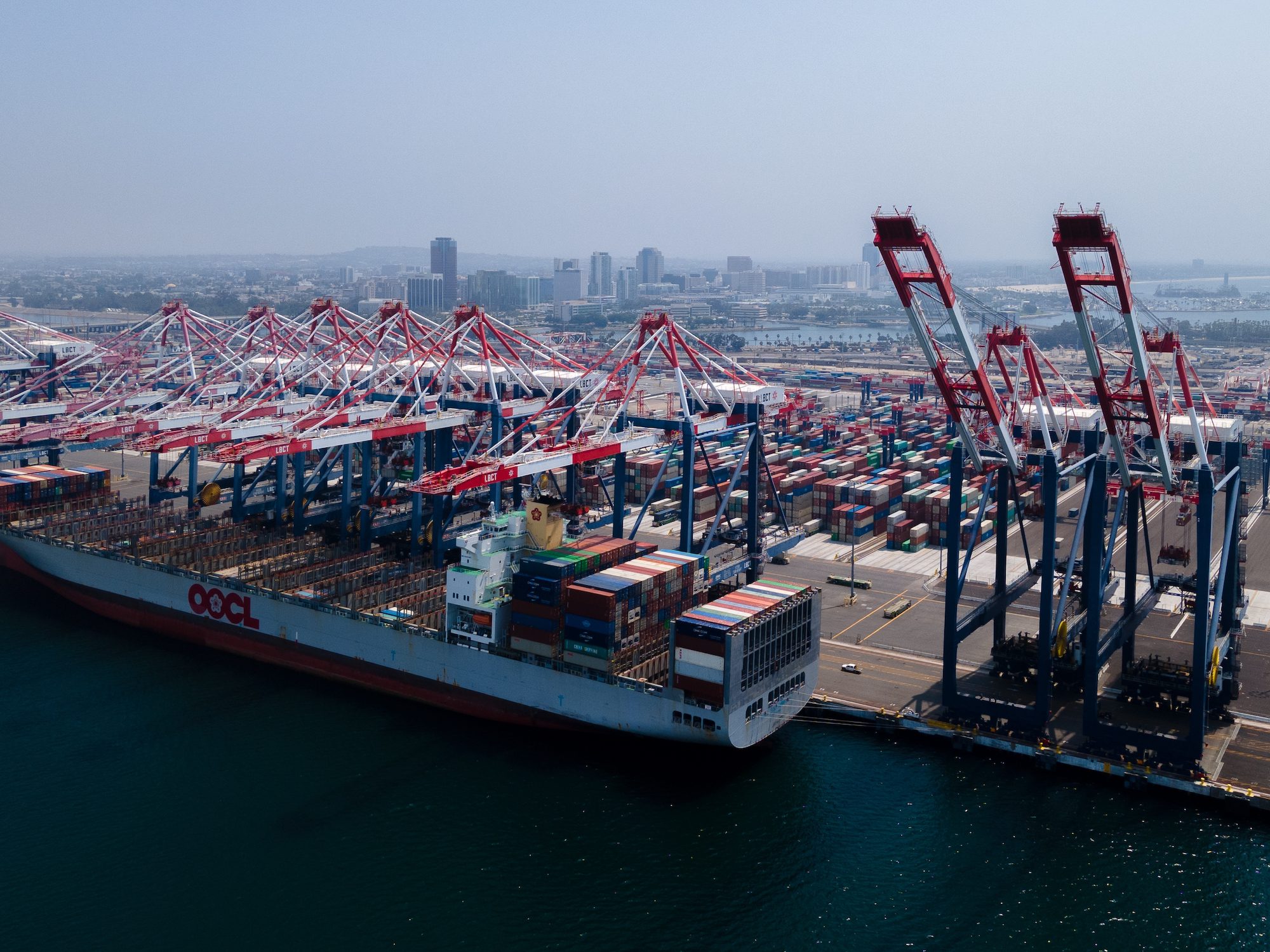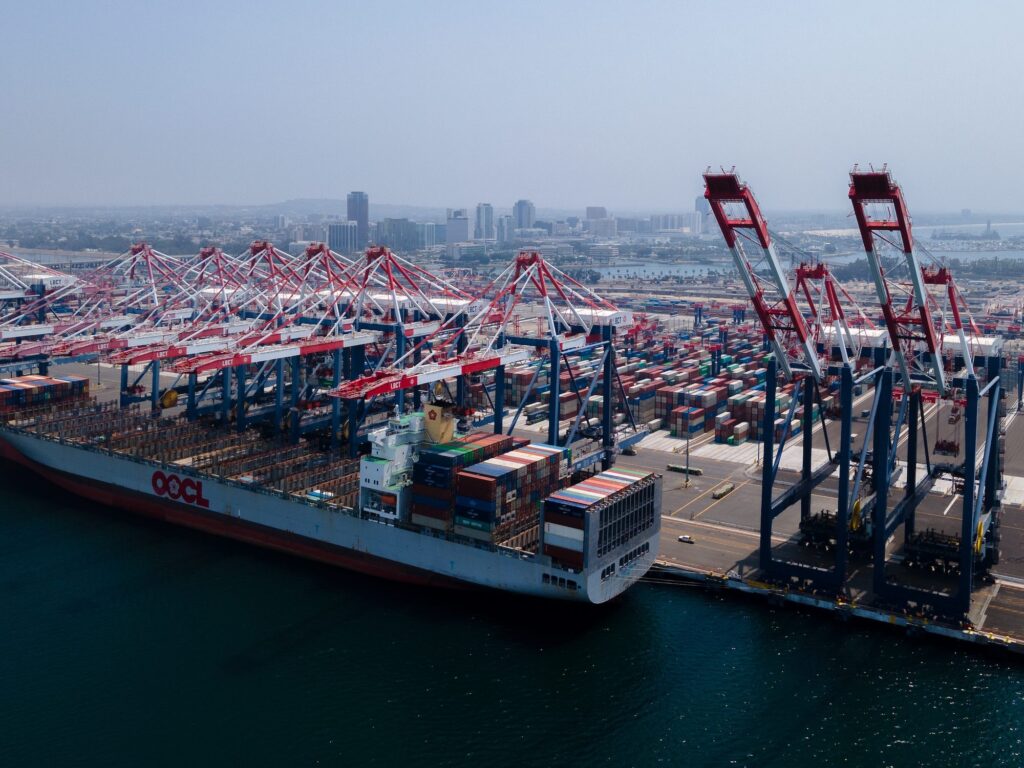
Photo: Richard H Grant / Shutterstock.com
Port of Long Beach Reports Second-Busiest Month Ahead of Summertime Cargo Surge
The Port of Long Beach has reported its second busiest month on record in May as it looks ahead to a summer cargo surge that could follow China’s reopening from COVID-19 lockdowns.
Dockworkers and terminal operators at the port processed 890,989 TEU in May, a 1.8% decline from May 2021—the port’s all-time busiest month. Imports decreased 1.7% to 436,977 TEUs and exports were down 12.6% to 118,234 TEUs. Empty containers moved through the Long Beach increased 2.6% to 335,778 TEUs.
“We are moving an extraordinary amount of cargo and continue to work with industry partners to quickly move imports and empties off the docks,” said Port of Long Beach Executive Director Mario Cordero. “Looking ahead, we are ready for the traditional summertime surge to coincide with China’s recovery from a lengthy lockdown.”
Despite some risks in market, the Port of Long Beach said its anticipates a cargo influx as pandemic-induced shutdowns are lifted in China.
“Strong income gains and a large savings cushion are anticipated to support consumer spending this year, despite the ongoing risks of inflation, the war in Ukraine and the recent lockdown in China. Demand for workers remains strong, with the addition of 6.6 million jobs reported nationwide over the past year. Increases in core durable goods shipments suggest business investment continues to progress at a steady clip,” the port said in a statement.
Year-to-date, the Port of Long Beach has moved 4,172,366 TEUs through May, a 3.5% increase from the same period in 2021 when the port set an annual cargo record.
As for the backup, the Marine Exchange of Southern California said 30 containerships were in the queue, equal to the two-week trailing average and down from the record of 109 ships on January 9, 2022.
“We appreciate the hardworking people who quickly process cargo and make the Port of Long Beach a leader in trans-Pacific trade,” said Long Beach Harbor Commission President Steven Neal. “We are collaborating with federal, state, local and industry stakeholders to find long-term solutions that will satisfy consumer demand and increase efficiency at the port.”
In other Port of Long Beach news, the port has continued to withhold implementing its “Container Dwell Fee” program that would charge ocean carriers for containers that remain at marine terminals beyond a grace period. The San Pedro Bay ports – Long Beach and Los Angeles – have seen a 40% decline in aging cargo on the docks since the program was announced on October 25.
Also, on Thursday, the Port of Long Beach announced it has signed on to the Shanghai-Los Angeles Green Shipping Corridor to create a zero-emissions trans-Pacific trade route by 2030.
The Port of Long Beach is one of the first major ports in the country to report its May cargo numbers. The Port of Charleston on the east coast also saw record volumes in May, led by retail imports. The Port of Los Angeles, the busiest container port in the U.S., has not yet reported its May cargo numbers.




Comments are closed.